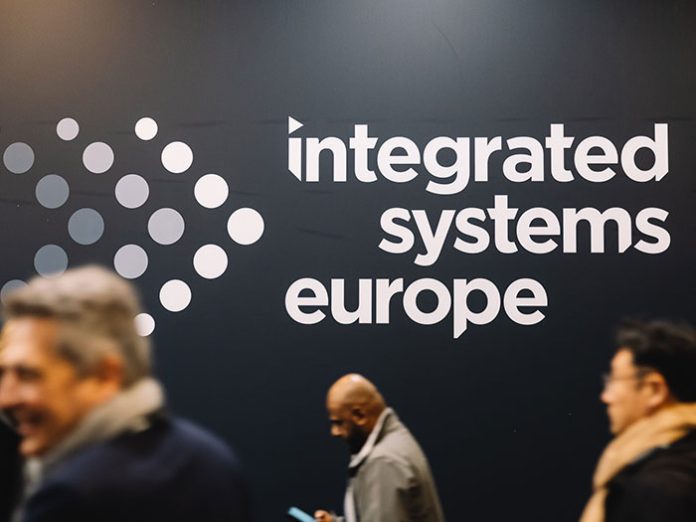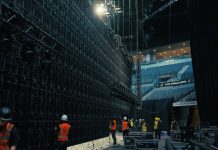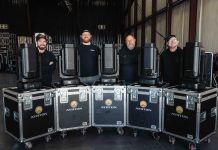For two decades, the Integrated Systems Europe show has played a role in shaping the pro AV and systems integration landscape. Celebrating the 20th anniversary of ISE, Mike Blackman takes a trip down memory lane, revealing the story behind the formation of ISE and his own journey over the decades.
Blackman spoke about the prime movers at InfoComm, CEDIA, and NSCA, the original owners of the show, and how the idea for an exhibition of integrated systems technology came about. Blackman recounted, “The real first mover was Randy Lemke of InfoComm (later AVIXA) – he had the idea.” While there had been previous InfoComm shows in Germany, in collaboration with the Photokina show and with exhibitors such as Kodak, Randy recognised that the AV industry was changing, and a new exhibition was needed to cater for these changes. Randy reached out to Billilynne Keller from CEDIA and Chuck Wilson from NSCA, and together they hatched the plan to create ISE.
Blackman recruitment began with an approach by one of his old bosses (Cherif Moujabber), who was a headhunter. Mike commented, “I had the feeling that it was something that was going to grow; a marketplace was going to develop. I saw more and more things that were becoming more intrinsic in our lifestyles and thought, ‘This is going to be more and more important as time goes on.'”
Blackman officially joined Integrated Systems Events in 2003, and the journey to launch the show began. In the early days, he had just two team members, Godwin Demicoli and a trainee. Together, they laid the groundwork for the inaugural event in January 2004.
The organisation recruited Martine Niermans and Daniëlle Inostroza Mike recalled, “The organisation grew and grew, and we became stronger by having our own people rather than outsourcing too much.” The team continued to expand with the addition of Dan Goldstein and Stefanie Span (formerly Hanel).
Blackman revealed that the initial venue, Geneva, was chosen for its neutral location but after a European road trip that Mike undertook with Jason McGraw of InfoComm, Amsterdam became the new home for ISE.
Reflecting on the Geneva show, Mike shared, “The first thing that happened was when we opened up registration. Everything looked really good, and we had hundreds of people registering from far-flung places like Africa and we thought, ‘Wow, this show’s going to be really international!’ As it was, about 3,500 people registered for the first show. No-one came from Africa; we learned very quickly that shows like ours could be used to try to get visas for into Europe, and it changed the whole way in which we handled that for registration in the future.”
Blackman noted that brands have adapted their programmes to achieve impact at ISE. He explained: “ISE provides the opportunity for companies to do market research with customers and potential customers to find out what they want and learn. Over the years, we’ve seen a change in the R&D process in that more and more companies are focusing their product launches for January, February. For display companies, it makes a lot of sense because they’re taking some equipment to CES in the US and then shipping it straight to ISE afterwards. So, within a two-week window they get the opportunity to launch products in two continents. We see the same for our pro audio companies as well. It helps them to present their products in the marketplace.”
As the show grew, the concept of Technology Zones emerged to help attendees navigate the array of offerings. These zones, such as the Content Production & Distribution Zone introduced in 2023, serve to group-related technologies.
During the COVID-19 pandemic, Blackman told that during the time of lockdowns ISE toyed with the idea of a virtual event but he found that it didnt meet the exhibitor or attendee expectations. Mike explained, “Our experience was that while virtual events can be satisfying for attendees, attendees are not coming out with new products, new contacts, and new sales that are generated from a physical event. We had 20% of the visitors and exhibitors say that they had done some business with people they didn’t know prior to the event.”
As ISE celebrates its 20th anniversary, Blackman wants the show to be as impactful as ever, He sees ISE evolving in a way that incorporates a blend of physical and digital elements to cater to the needs of the modern world. “I see ISE as being even more important in the future. I think the show is still going to be here in 20 years’ time, but it will have evolved into something more. I see ISE influencing the industry to a greater extent and helping the industry to move forwards, which is what I’ve always wanted,” he commented.
As ISE looks ahead to the next 20 years and beyond, the show will continue bringing together professionals from around the world to celebrate the world of integrated systems technology.






